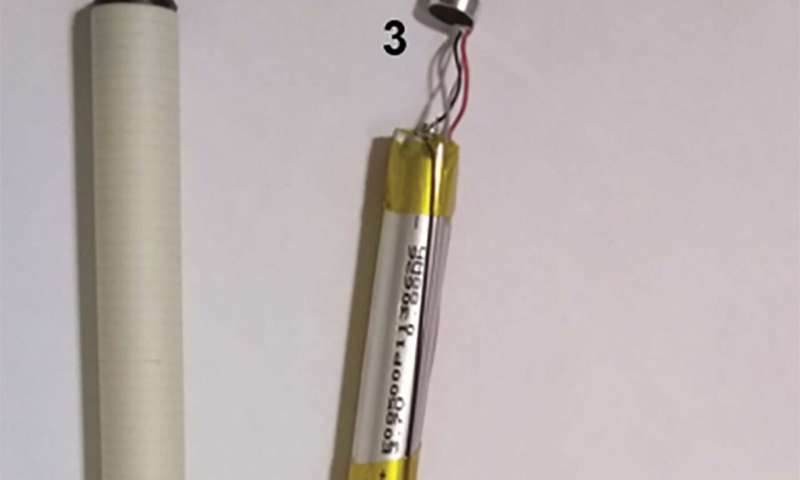
Smoking e-cigarettes, also called vaping, has been marketed as a safe alternative to tobacco cigarettes and is rising in popularity among non-smoking adolescents. However, a single e-cigarette can be harmful to the body’s blood vessels—even when the vapor is entirely nicotine-free—according to a new study by researchers in the Perelman School of Medicine at the University of Pennsylvania. The results were published today in Radiology.
To study the short-term impacts of vaping, the researchers performed MRI exams on 31 healthy, non-smoking adults before and after vaping a nicotine-free e-cigarette. Comparing the pre- and post-MRI data, the single episode of vaping resulted in reduced blood flow and impaired endothelial function in the large (femoral) artery that supplies blood to the thigh and leg. The endothelium, which lines the inside surface of blood vessels, is essential to proper blood circulation. Once the endothelium is damaged, arteries thicken and blood flow to the heart and the brain can be cut off, resulting in heart attack or stroke.
“While e-cigarette liquid may be relatively harmless, the vaporization process can transform the molecules—primarily propylene glycol and glycerol—into toxic substances,” said the study’s principal investigator Felix W. Wehrli, Ph.D., a professor of Radiologic Science and Biophysics. “Beyond the harmful effects of nicotine, we’ve shown that vaping has a sudden, immediate effect on the body’s vascular function, and could potentially lead to long-term harmful consequences.”
E-cigarettes are battery-operated devices that convert liquid into aerosol, which is inhaled into the user’s lungs. Typically, the liquid contains addictive nicotine, as well as flavors. More than 10 million adults in the United States use e-cigarettes, and vaping has become especially popular among teenagers. While there appears to be some consensus that vaping may be less harmful to health than tobacco cigarette smoking, the dangers of e-cigarettes remain unclear.
In this study, the researchers examined the impact of an e-cigarette that contained propylene glycol and glycerol with tobacco flavoring, but no nicotine, which study participants took 16, three-second puffs from. To evaluate vascular reactivity, the group constricted the vessels of the thigh with a cuff and then measured how quickly the blood flowed after its release. Using a multi-parametric MRI procedure, researchers scanned the femoral artery and vein in the leg before and after each vaping episode to see how vascular function changed.

The researchers then performed a statistical analysis to determine group differences in vascular function before and after vaping. They observed, on average, a 34 percent reduction in the femoral artery’s dilation. E-cigarettes exposure also led to a 17.5 percent reduction in peak blood flow, a 20 percent reduction in venous oxygen, and a 25.8 percent reduction in blood acceleration after the cuff release—the speed at which the blood returned to the normal flow after being constricted. These findings suggest that vaping can cause significant changes to the inner lining of blood vessels, said study lead author Alessandra Caporale, Ph.D., a post-doctoral researcher in the Laboratory for Structural, Physiologic, and Functional Imaging at Penn.
“E-cigarettes are advertised as not harmful, and many e-cigarette users are convinced that they are just inhaling water vapor,” Caporale said. “But the solvents, flavorings and additives in the liquid base, after vaporization, expose users to multiple insults to the respiratory tract and blood vessels.”
Wehrli noted that they observed these striking changes after the participants (all of whom never smoked previously) used an e-cigarette a single time. More research is needed to address the potential long-term adverse effects of vaping on vascular health, but he predicts that e-cigarettes are potentially much more hazardous than previously assumed. Earlier this year, for instance, his research group found that acute exposure to e-cigarettes causes vascular inflammation.
Source: Read Full Article
